Focus on Physics
Newton’s Prisms
The Science Teacher—November/December 2020 (Volume 88, Issue 2)
By Paul G. Hewitt
We often think of Isaac Newton as the great scientist who formulated the laws of motion and the universal law of gravitation. Interestingly, Newton’s fame began years earlier with his study of optics. In the mid-seventeenth century, while studying images of heavenly bodies formed by a lens, he noted coloration at the edges of the images. To investigate this, he darkened his room and allowed a narrow beam of sunlight to pass through a small circular hole in the shutter, producing a circular patch of white light on the opposite wall. He placed a triangular solid glass prism in the beam of sunlight and observed that the beam split into the colors of the rainbow. The fact that sunlight is composed of rainbow colors was, and still is, an awesome nicety of nature.
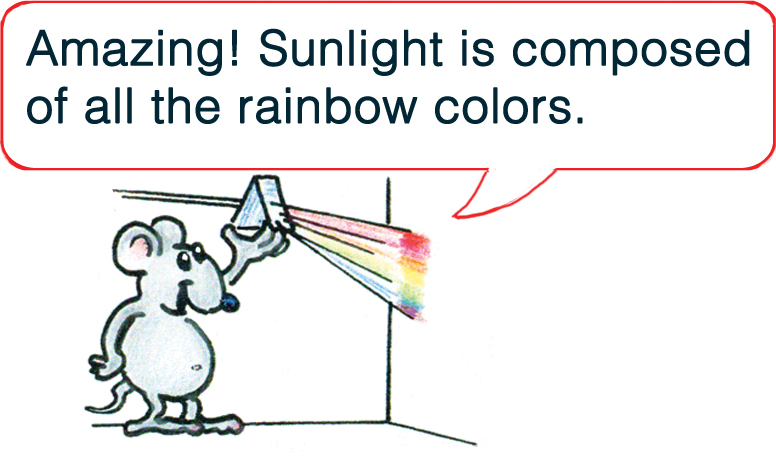
Dispersion
The separation of mixed-frequency light into colors arranged according to frequency is called dispersion, as nicely displayed by Manny Mouse holding a solid glass prism in sunlight as Newton did centuries ago. Different frequencies display different colors. Manny sees sunlight dispersed into the color spectrum, from lower-frequency red to higher-frequency violet. Frequencies of light below red and above violet are infrared and ultraviolet, regions of the much wider electromagnetic spectrum that is invisible to the human eye. Visible light spans a tiny sliver of the electromagnetic spectrum.
Refraction
Light travels in free space—in a vacuum—at a constant speed of 300,000 km/s, for which we use the symbol c. The speed of light in air is so close to its speed in free space that we say it is also c. However, when light travels in a denser medium, such as water or a glass prism, it travels at a speed significantly less than c. Light traveling from one transparent medium to another medium undergoes a change in speed, which causes its path to bend (unless its path is “head-on” to the interface). It is said to be refracted. Refraction is evident when a light beam incident obliquely on glass abruptly changes its direction. The amount of bending of the beam depends on color. This means that refraction (bending of the beam) causes dispersion (separation of colors).
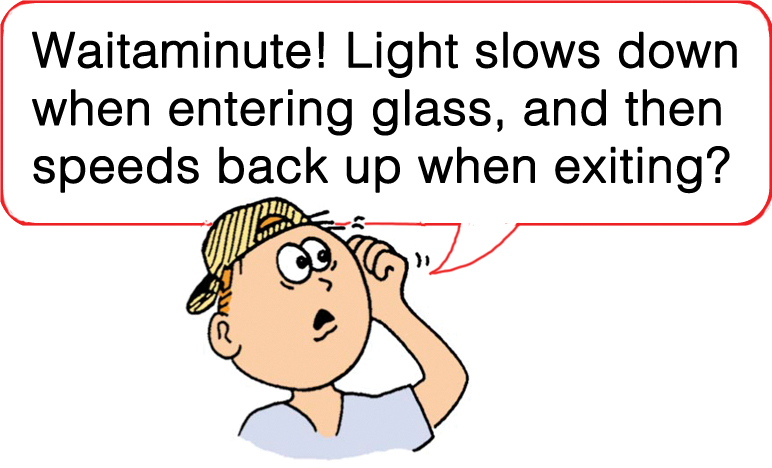
The slowing of light in a glass prism
Sunlight that is incident on a glass prism is slowed as it interacts with the glass. If its angle of incidence is other than 90 degrees, it refracts to a new direction. The red part of the sunbeam slows and abruptly bends as it refracts into the glass, the green bends more, and the higher-frequency blue bends even more. Although only red, green, and blue are shown in Figure 1, all the component colors of white light separate in the glass. When the light emerges, it regains its original speed as it undergoes a second refraction, and the separation is further increased.
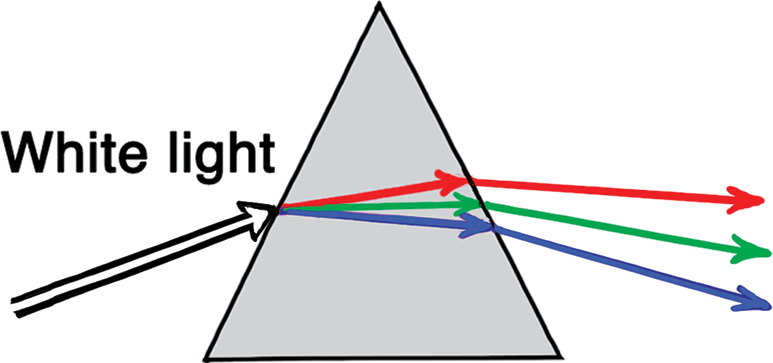
A prism disperses white sunlight into its component colors.
Undoing dispersion
Newton further found that when he held a pair of identical prisms in the sunlight beam, inverting the second one so that the two opposite surfaces of both prisms were parallel, the dispersed colors recombined to make white light again (Figure 2). This was confirmation that white light indeed is the combination of all the rainbow colors. Note that the representative red, green, and blue rays of light that exit are parallel to the incident white light and combine to white light when seen by the eye.
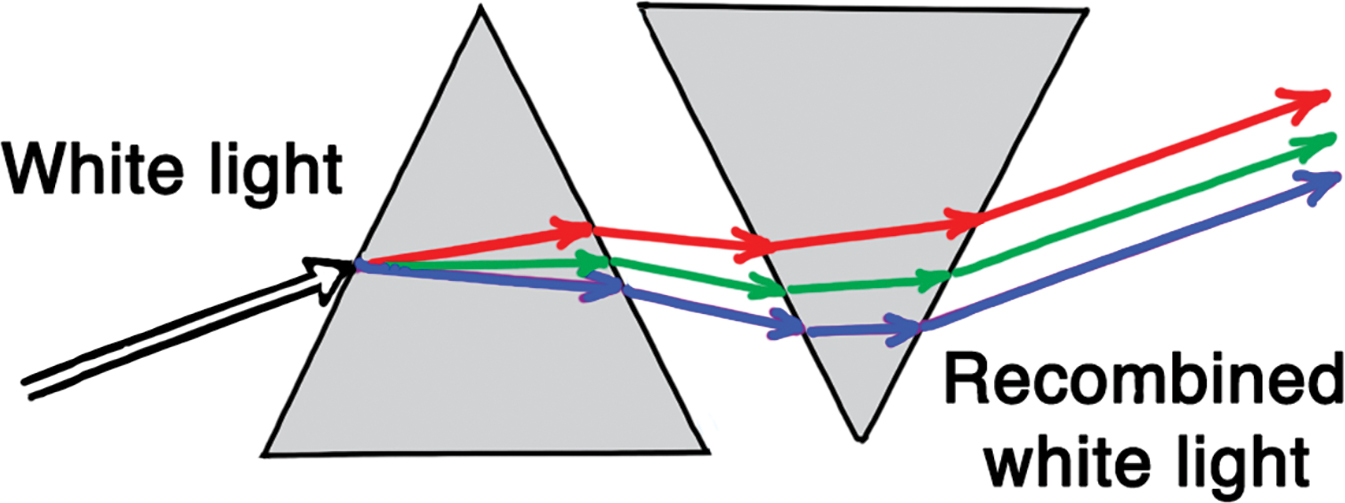
A second inverted prism undoes the dispersion of the first prism.
Windowpane
Since a prism and a windowpane are made of the same material, why doesn’t the windowpane disperse light into colors as a glass prism does? After all, light incident upon a windowpane at an oblique angle undergoes the same inside dispersion as occurs inside a glass prism (Figure 3). In the figure we see that if the entrance and exit surfaces of the pair of prisms are parallel to each other, they make up a single imaginary sheet of windowpane. The white light that enters the windowpane or prisms exits as white light.
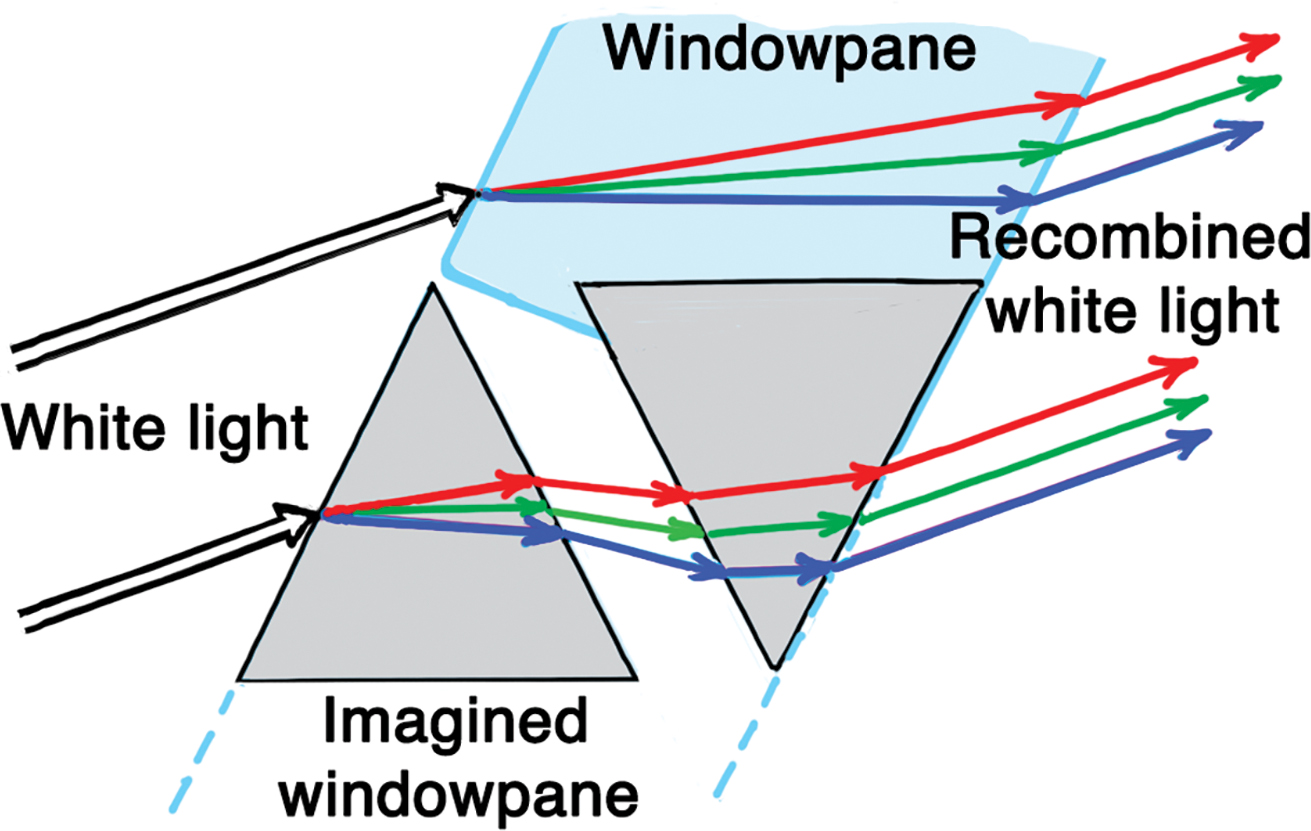
No net dispersion occurs when the entrance and exit surfaces are parallel to each other.
Conditions for undoing dispersion
Undoing dispersion with two prisms does not require identical prisms. It does require (1) the same type of glass, (2) one angle in common, and (3) parallel entrance and exit faces. It is easy to imagine that the prisms in Figure 3 could be of different sizes, or even have different shapes, and nonetheless undo dispersion. What is important is that they meet these three conditions.
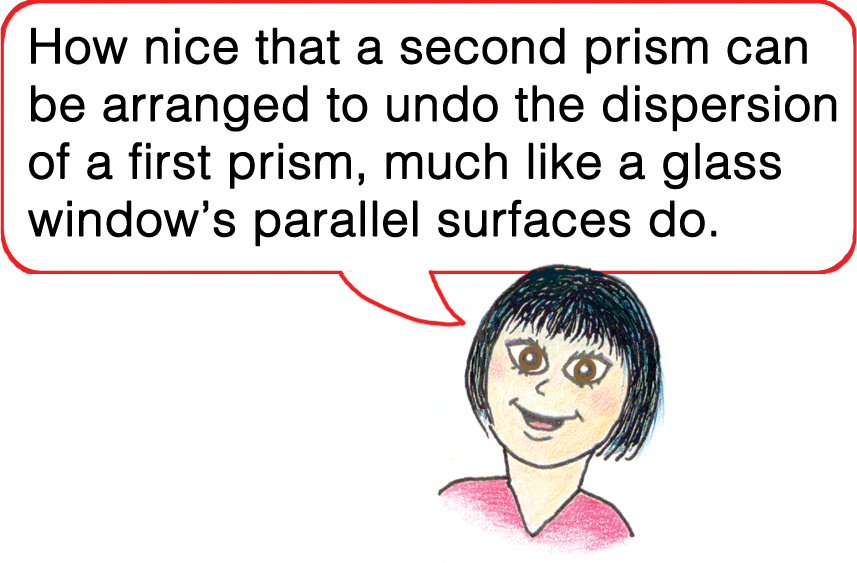
Light beam displacement
Depending on the thickness of glass of the prisms or the windowpane in Figure 3, notice that the exiting red, green, and blue rays of light are displaced from their initial path. This effect is noticeable when looking through the extra-thick glass of a public aquarium. If you look at a fish through an angle, you’ll see it not only displaced, but wider. The color of the fish isn’t changed. Similarly, the emerging red, green, and blue rays exiting glass are displaced, somewhat wider apart, and recombine to be seen as white to the eye. Dispersion is undone. This is truly remarkable.
Windowpane with beveled edges
Dispersion does occur at the edges of beveled glass where the surfaces are not parallel. The same is true for mirrors with beveled edges—rainbow colors are nicely dispersed in a sunlit or lighted room. We welcome a display of rainbow colors even when no rainbow is present.
Paul G. Hewitt (pghewitt@aol.com) is the author of Conceptual Physics, 12th edition (and upcoming 13th edition in early 2021); Conceptual Physical Science, 6th edition, coauthored with daughter Leslie Hewitt and nephew John Suchocki; and Conceptual Integrated Science, new 3rd edition, with coauthors Suzanne Lyons, John Suchocki, and Jennifer Yeh.


